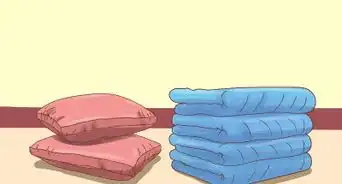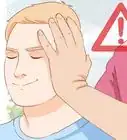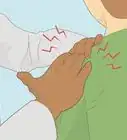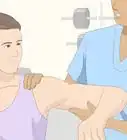This article was medically reviewed by Joel Giffin, PT, DPT, CHT. Dr. Joel Giffin is a Doctor of Physical Therapy and the Founder of Flex Physical Therapy in New York, New York. With over 15 years of experience as a Certified Hand Therapist (CHT), Dr. Giffin treats the whole body and specializes in rehabilitation of the hand and upper extremities. He has treated Broadway theater performers backstage at shows such as The Lion King, Sleep No More, Tarzan, and Sister Act. Flex Physical Therapy also specializes in occupational and pelvic floor therapy. Dr. Giffin earned his Master’s degree in Physical Therapy with honors from Quinnipiac University and received his Doctor of Physical Therapy (DPT) degree with distinction from Simmons College. He is a member of the American Physical Therapy Association and the American Society of Hand Therapists.
There are 11 references cited in this article, which can be found at the bottom of the page.
This article has been viewed 75,897 times.
Your rotator cuffs include the muscles and tendons that connect your arm to your shoulder and allow your arm to move smoothly at the shoulder. Keeping these muscles strong and maintaining your range of motion is an important part of keeping your shoulders limber and stable, as well as avoiding injury. To strengthen your rotator cuffs, start by stretching out the muscles. Then do a series of exercises that build up your muscle strength.
Steps
Stretching Out Your Rotator Cuff Muscles
-
1Start with a pendulum stretch. Stand next to a table or counter, lean forward, and put one of your hands on the surface to support your body. Relax the other arm and let it hang down freely and straight. Move the whole arm is a small circle slowly. The hand only needs to be making a circle that is about 12 inches (30 cm) wide. The top of the arm will just be rotating slightly in the shoulder.[1]
- Once you have done a minute or 2 or circles, reverse the direction you are moving and do them for another minute or 2.
- Overall you will do about 2 sets of 10 rotations.[2]
- It should only take a few minutes to stretch these muscles out, so take the time to do it and don’t skip it so save a few minutes.[3]
Tip: Stretching out your rotator cuff muscles before strength training is especially important if you have had a rotator cuff injury in the past. It will help prevent you from getting injured again.
-
2Do a cross-body shoulder stretch. Relax your shoulders and then lift up 1 of your arms up and stretch it across your body. It should be positioned so that it is going straight across your chest. Then lift up the other arm and hold the arm you are stretching at the upper arm, pressing it gently into your chest to increase the stretch. Hold the stretch for about 30 seconds and then relax both arms.[4]
- Wait 30 seconds and then stretch the other arm in the same manner.
- Repeat this 4 to 5 times on each arm.
Advertisement -
3Stretch your rotator cuffs with passive internal rotations. Grab a yardstick, cane, towel, or umbrella, basically anything that is about 12 inches (30 cm) wider than your body, so you can use it to assist in your stretching. Hold the end of your item with one hand, put the length of it behind your body, and grab the other end with your other hand. Stretch your arms out straight so that you are holding the item horizontally. Pull 1 of your hands out away from your body, so that the other arm is pulled right behind the body. Pull until you feel a stretch in the shoulder.[5]
- Hold the stretch for about 30 seconds and then relax your arms for 30 seconds.
- Repeat this stretch on the opposite side.
- Do this stretch about 4 times on each side.
-
4Perform a prone shoulder extension to improve your joint function. Lie on your stomach on an exercise mat with your arms at your side. Face your palms toward the ceiling. Gently lift your right arm about 6 to 12 inches (15 to 30 cm) off of the exercise mat. Hold for 15-30 seconds, then release. Repeat on your left side.[6]
- Do 2-3 repetitions on each side.
- Lift your arm only as high as you comfortably can. Stop if you feel any discomfort.
Strengthening Healthy Rotator Cuff Muscles
-
1Perform a supine shoulder flexion exercise to gently work your muscles. Lie on your back with your knees bent at a 90 degree angle. Place your arms at your sides with your palms facing up. Hold a ball or small hand weight in your right hand. Hinge your shoulder forward until your arm is perpendicular to your body, lifting the ball or weight toward the ceiling. Hold the stretch for 15-30 seconds, then release and switch to the left side.[7]
- Do 2 sets of 10 to 15 lifts on each side.
- Only lift your arm as high as you comfortably can. Stop if you feel any discomfort.
-
2Do rotations with weights. Hold a weight in your hand and bend your elbow to 90 degrees. Tuck your elbow into the side of your body and rotate the outstretched part of your arm slowly in towards your abdomen and then out away from the body. Repeat this full movement 10 to 15 times and then take a break.[8]
- Do 2 sets of 10 to 15 of these exercises on each arm.
- Use an amount of weight that you can easily pick up and hold while your elbow is flexed at 90 degrees. If you are not used to lifting a lot of weight, this could be done with as little as 1 pound (0.45 kg). Remember, you do not need to use a ton of weight to strengthen these muscles.
- You can either do this exercise with free weights or at a weight lifting tower.
- This exercise is a combination of internal and external rotations.
-
3Complete isometric shoulder exercises. Begin by standing facing a wall. Flex 1 of your arms 90 degrees at the elbow and make a fist with that hand. Place your knuckles against the wall and position your body so the upper part of that arm is vertical. Press your fist against the wall by flexing your shoulder and arm muscles. Hold this position for 5 seconds and then relax the muscles.
- Do this 10 to 15 times on each arm.
Tip: There is no need to press extremely hard into the wall. The goal is just to activate the shoulder muscles, not to hurt your knuckles on wall.
-
4Do wall push ups. Stand facing a wall, with your body an arm length away from the wall. Place your feet hip width apart and place both of the palms of your hands on the wall. Bend your elbows and move your body towards the wall until your elbows are bent at 90 degrees. Hold this position for 1 second and then extend your arms back out until they are in their starting position and your body is upright.[9]
- As you move your body towards the wall, keep your feet planted and your body in a straight line. This will force the shoulder muscles to do the work of the exercise.
- Repeat this exercise 10 to 15 times. Then take a break and do 10 to 15 more.
Taking an Injury into Account Before Exercising
-
1Consult with your doctor or physical therapist about your exercise plan.[10] If you are recovering from an injury to your rotator cuff and you don’t want to lose muscle mass, then it’s important to start exercising the muscles again as soon as possible. However, you need to do the right exercises and do them in the right way in order to continue your recovery successfully.[11]
- When talking to your doctor or physical therapist, ask them what exercises you should do, how often to do them, how long you should be doing your routine, and what you should do if they start causing you pain.[12]
Tip: Your doctor and your physical therapist are great resources for figuring out what kind of exercise program will be best for your specific injuries.
-
2Rest your shoulder for a few days after you experience pain. Avoid doing any activities that may trigger your pain, like lifting weights or carrying heavy objects. Additionally, don't throw or toss anything, as this will work your rotator cuff. However, it's okay to do light exercise that doesn't work your shoulder, such as walking.[13] [14]
- Ask your doctor when it's okay to resume exercising your rotator cuff.
-
3Take OTC NSAIDs to reduce inflammation and pain. Ask your doctor before taking any medication, especially if you use prescription medications. NSAIDs like ibuprofen, Advil, Motrin, naproxen, and Aleve can help you deal with pain and swelling. Read the label to make sure you're taking the medication as directed.[15] [16]
- You can buy these products over-the-counter at your local drug store or online.
- NSAIDs are not appropriate for long-term use, so only use them for a few days unless directed otherwise by your doctor. Additionally, don't take more than you need to find relief.
-
4Give yourself a light massage to reduce shoulder pain. Apply a massage oil to your skin around the shoulder area. Then, use your opposite hand to make slow, circular motions around your injured shoulder. Apply a light pressure so you don't aggravate the injury.[17]
- If you don't have massage oil, try olive oil or coconut oil. You can do the massage without oil, but your hand won't glide over your shoulder as easily. This can accidentally trigger pain.
-
5Start exercises cautiously but as soon as possible. After an injury, it’s important to get your muscles working again. However, you need to do this gradually so that you don’t cause further problems. Start exercising the muscles as soon as the pain is gone and don’t do anything that causes additional pain. If a movement is painful, you shouldn’t be doing it yet.[18]
- For example, when you start using your rotator cuff muscles again, keep your range of motion small at first. Trying to stretch those muscles out completely right off the bat can re-tear or injure them.[19]
-
6Ice your shoulders after exercising. This will help reduce inflammation and allow your muscles to recover more quickly after the exercise. Simply apply an ice pack wrapped in a towel to your shoulder for 20 minutes at a time. Wait until the skin is normal temperature again before reapplying the ice pack again.[20] [21]
- Do 2-3 rounds of icing on both shoulders.
Expert Q&A
Did you know you can get expert answers for this article?
Unlock expert answers by supporting wikiHow
-
QuestionWhat exercises should I start with after a rotator cuff injury?
 Joel Giffin, PT, DPT, CHTDr. Joel Giffin is a Doctor of Physical Therapy and the Founder of Flex Physical Therapy in New York, New York. With over 15 years of experience as a Certified Hand Therapist (CHT), Dr. Giffin treats the whole body and specializes in rehabilitation of the hand and upper extremities. He has treated Broadway theater performers backstage at shows such as The Lion King, Sleep No More, Tarzan, and Sister Act. Flex Physical Therapy also specializes in occupational and pelvic floor therapy. Dr. Giffin earned his Master’s degree in Physical Therapy with honors from Quinnipiac University and received his Doctor of Physical Therapy (DPT) degree with distinction from Simmons College. He is a member of the American Physical Therapy Association and the American Society of Hand Therapists.
Joel Giffin, PT, DPT, CHTDr. Joel Giffin is a Doctor of Physical Therapy and the Founder of Flex Physical Therapy in New York, New York. With over 15 years of experience as a Certified Hand Therapist (CHT), Dr. Giffin treats the whole body and specializes in rehabilitation of the hand and upper extremities. He has treated Broadway theater performers backstage at shows such as The Lion King, Sleep No More, Tarzan, and Sister Act. Flex Physical Therapy also specializes in occupational and pelvic floor therapy. Dr. Giffin earned his Master’s degree in Physical Therapy with honors from Quinnipiac University and received his Doctor of Physical Therapy (DPT) degree with distinction from Simmons College. He is a member of the American Physical Therapy Association and the American Society of Hand Therapists.
Physical Therapist If you're doing better and you can start moving around a little bit, you could start doing isometric shoulder exercises. For example, stand next to a wall, pinch your shoulder blade back, and push the side of your elbow into the wall gently, holding it for 5 seconds. Repeat 7-10 times. You can also try standing, bending your elbow at 90 degrees, making a fist, and then pushing that into a wall. Or, you can push your elbow backward if you're standing with your back against the wall. Those are the three most basic exercises that I would start off with. They should be pain-free.
If you're doing better and you can start moving around a little bit, you could start doing isometric shoulder exercises. For example, stand next to a wall, pinch your shoulder blade back, and push the side of your elbow into the wall gently, holding it for 5 seconds. Repeat 7-10 times. You can also try standing, bending your elbow at 90 degrees, making a fist, and then pushing that into a wall. Or, you can push your elbow backward if you're standing with your back against the wall. Those are the three most basic exercises that I would start off with. They should be pain-free.
References
- ↑ https://www.health.harvard.edu/shoulders/stretching-exercises-frozen-shoulder
- ↑ https://orthoinfo.aaos.org/en/recovery/rotator-cuff-and-shoulder-conditioning-program/
- ↑ https://orthoinfo.aaos.org/en/recovery/rotator-cuff-and-shoulder-conditioning-program/
- ↑ https://orthoinfo.aaos.org/en/recovery/rotator-cuff-and-shoulder-conditioning-program/
- ↑ https://orthoinfo.aaos.org/en/recovery/rotator-cuff-and-shoulder-conditioning-program/
- ↑ https://www.ncbi.nlm.nih.gov/pmc/articles/PMC4827371/
- ↑ https://www.ncbi.nlm.nih.gov/pmc/articles/PMC4827371/
- ↑ https://www.mensjournal.com/health-fitness/injury-free-best-rotator-cuff-exercises/
- ↑ https://go4life.nia.nih.gov/exercise/wall-push-up/
- ↑ Joel Giffin, PT, DPT, CHT. Physical Therapist. Expert Interview. 26 October 2020.
- ↑ https://medlineplus.gov/ency/patientinstructions/000357.htm
- ↑ https://familydoctor.org/rotator-cuff-exercises/?adfree=true
- ↑ https://www.verywellhealth.com/shoulder-pain-2548793
- ↑ Joel Giffin, PT, DPT, CHT. Physical Therapist. Expert Interview. 26 October 2020.
- ↑ https://www.verywellhealth.com/shoulder-pain-2548793
- ↑ Joel Giffin, PT, DPT, CHT. Physical Therapist. Expert Interview. 26 October 2020.
- ↑ https://www.ncbi.nlm.nih.gov/pmc/articles/PMC5462703/
- ↑ https://medlineplus.gov/ency/patientinstructions/000358.htm
- ↑ https://familydoctor.org/rotator-cuff-exercises/?adfree=true
- ↑ https://familydoctor.org/rotator-cuff-exercises/?adfree=true
- ↑ Joel Giffin, PT, DPT, CHT. Physical Therapist. Expert Interview. 26 October 2020.
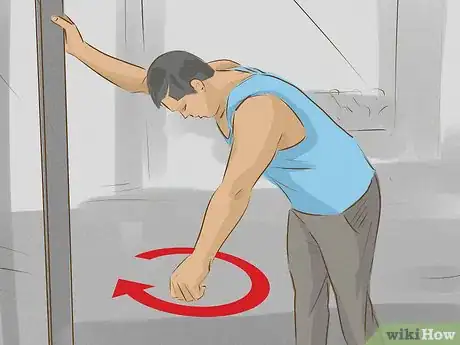

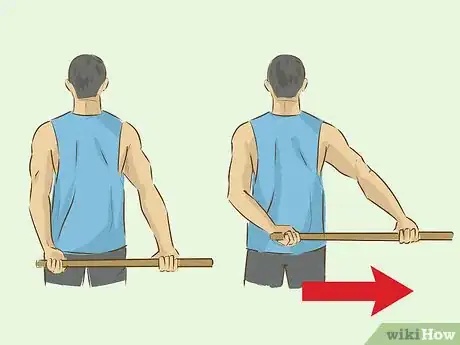
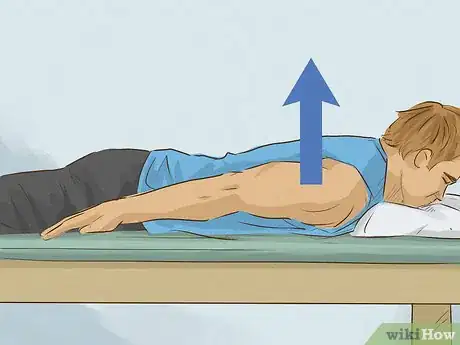
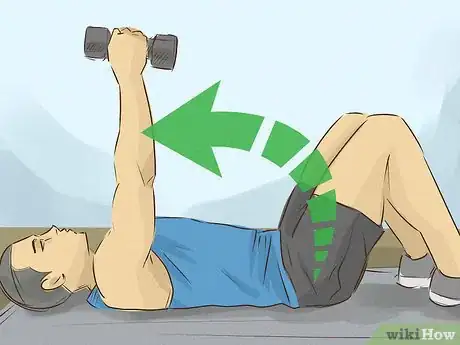
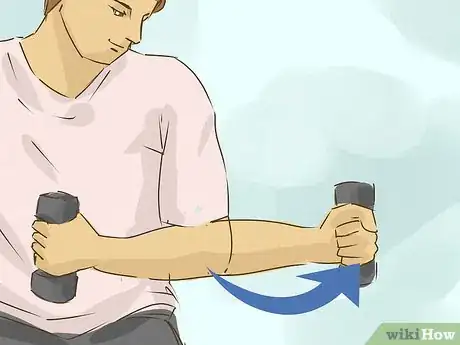
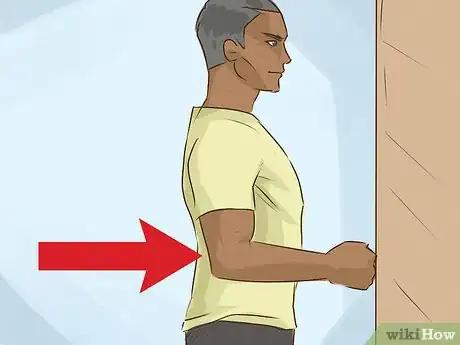

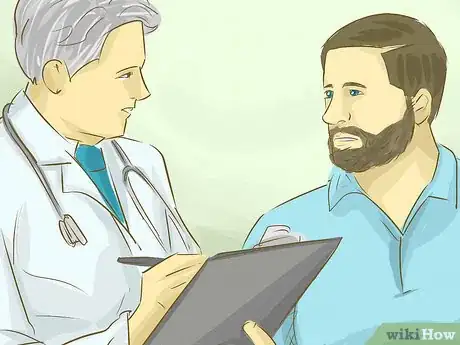

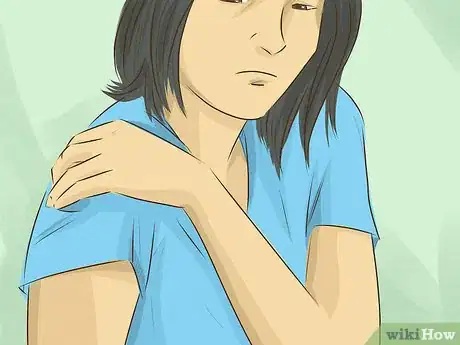
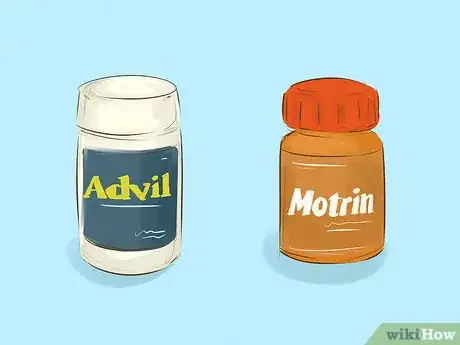
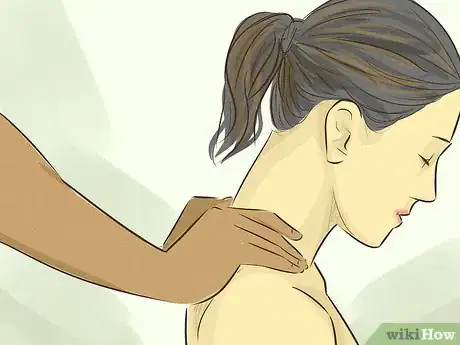
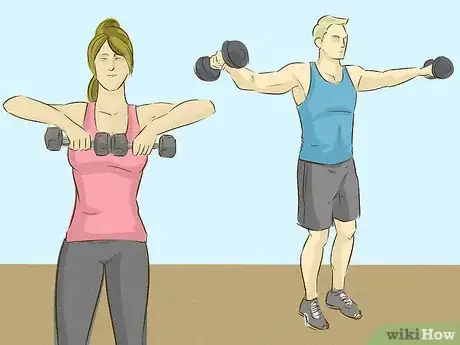
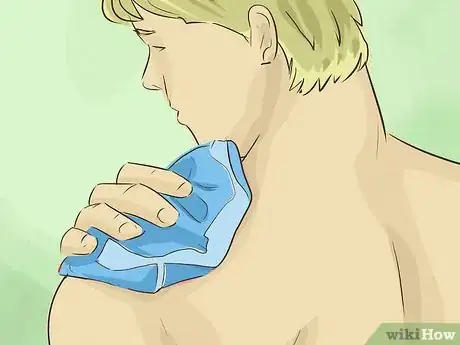


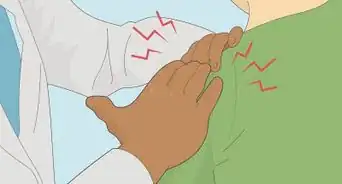
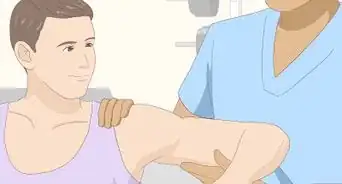
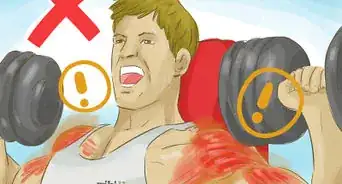
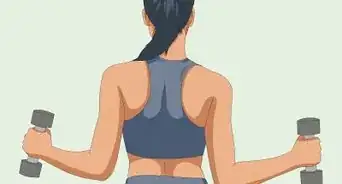
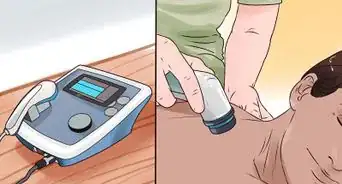
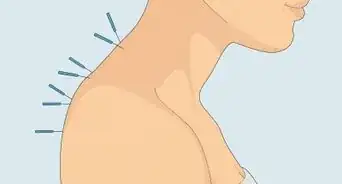
-Step-3-Version-3.webp)


